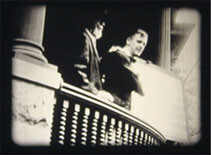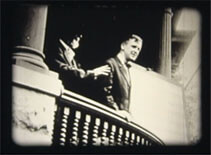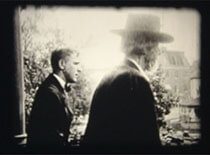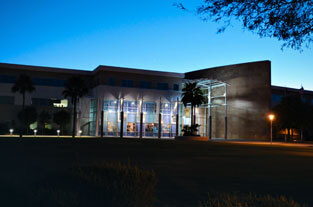
-
Colleges & Schools +
- Arizona School of Dentistry & Oral Health
- Arizona School of Dentistry & Oral Health Home Page
- About Arizona School of Dentistry & Oral Health
- Admissions
- Alumni and Friends
- Community
- Faculty and Staff
- New / Current Students
- Programs
- Prospective Students
- Admissions
- Hometown Applicants
- Apply Now
- Enrollment Services
- Programs
- Student Affairs
- Housing
- Learning Resources
- Thompson Campus Center
- Still-Wellbeing Student Wellness Program
- By Campus | Kirksville/Mesa
- Online Students
- Contact Us
- University Catalog
- University Student Handbook
- LeaderScript
- Above & Beyond Award
- Student Affairs Blog
- Meet the Staff
- Enrollment Services
- University Catalog
- University Student Handbook
- Requirements
- Student Association
- Student Affairs
- Support Arizona School of Dentistry & Oral Health
- Arizona School of Dentistry & Oral Health
- Arizona School of Health Sciences
- Arizona School of Health Sciences Home Page
- About Arizona School of Health Sciences
- Admissions
- Alumni and Friends
- Faculty and Staff
- New/Current Students
- Departments
- Online Programs
- Certificate Programs
- Graduate Certificate in Clinical Decision-Making in Athletic Training
- Graduate Certificate in Orthopaedics
- Graduate Certificate in Rehabilitation
- Graduate Certificate in Leadership and Education
- Graduate Certificate in Sport Neurology and Concussion
- Certificate in Public Health, Emergency Preparedness & Disaster Response
- Certificate in Health Professions Education
- Certificate in Adaptive Sports
- Certificate in Corrective Exercise & Orthopedic Rehabilitation
- Certificate in Exercise and Sport Psychology
- Certificate in Geriatric Exercise Science
- Certificate in Sports Conditioning
- Certificate in Fundamentals of Education
- Certificate in Global Health Concentration
- Certificate in Leadership & Organizational Behavior
- Prospective Students
- Residential Programs
- Student Affairs
- Support Arizona School of Health Sciences
- College of Graduate Health Studies
- College of Graduate Health Studies Home Page
- About College of Graduate Health Studies
- Admissions
- Alumni and Friends
- Commitment and Values
- Faculty & Staff
- Mission
- New / Current Students
- Programs
- Request Information
- Contact a Representative
- Apply Now
- Doctor of Health Administration
- a href="/college-of-graduate-health-studies/academics/doctor-of-health-sciences-degree-online">Doctor of Health Sciences
- Doctor of Nursing Practice
- Master of Health Administration
- Master of Public Health
- Master of Public Health - Dental Emphasis
- Master of Public Health - Dental Emphasis with a Dental Public Health Residency Certificate
- Master of Science in Kinesiology
- Canvas Demo Course
- Prospective Students
- Student Affairs
- Support College of Graduate Health Studies
- College for Healthy Communities
- Kirksville College of Osteopathic Medicine
- Kirksville College of Osteopathic Medicine Home Page
- About Kirksville College of Osteopathic Medicine
- Admissions
- Alumni & Friends
- Continuing Education (CE)
- Faculty & Staff
- New/Current Students
- New and Current Student Home
- Accepted Students
- Kirksville College of Osteopathic Medicine Academic Calendar
- Student Affairs
- Enrollment Services
- Academic Affairs
- Clinical Rotations
- Kirksville College of Osteopathic Medicine-AHEC Program
- Preceptor Information
- Postdoctoral Study (Still OPTI)
- Scholarly Activity
- ATSU Portal
- Kirksville College of Osteopathic Medicine Graduation
- University Student Handbook
- Kirksville College of Osteopathic Medicine Catalog
- Programs
- Prospective Students
- Prospective Student Home
- Kirksville College of Osteopathic Medicine Academic Calendar
- Admissions
- Application Process
- Premedical Student Checklist
- Top Ten Application Mistakes
- Personal Statement Tips
- Ambassadors
- Apply Now
- Enrollment Services
- Programs
- Student Affairs
- Kirksville College of Osteopathic Medicine Catalog
- Visit the Museum
- Board Scores
- Postgraduate Placement
- University Catalog
- University Student Handbook
- Student Affairs
- Support Kirksville College of Osteopathic Medicine
- Missouri School of Dentistry & Oral Health
- School of Osteopathic Medicine Arizona
- School of Osteopathic Medicine in Arizona Home Page
- About School of Osteopathic Medicine in Arizona
- Academics
- Admissions
- Alumni and Friends
- Faculty & Staff
- New / Current Students
- Accepted Students
- Student Services
- Enrollment Services
- Academic Affairs
- Clinical Rotations
- ATSU Portal
- University Student Handbook
- School of Osteopathic Medicine in Arizona Academic Calendars
- Graduation
- Programs
- Prospective Students
- Student Affairs
- Osteopathic Medicine Center
- Support School of Osteopathic Medicine in Arizona
Looking for This +
- About ATSU
- Programs of Study
- Residential Programs
- Doctorate Level Degree Programs
- Doctor of Audiology (AuD)
- Doctor of Dental Medicine - AZ (DMD)
- Doctor of Dental Medicine - MO (DMD)
- Occupational Therapy Entry-level - AZ (OTD-E)
- Doctor of Physical Therapy (DPT)
- Doctor of Health Sciences (DHSc)
- Doctor of Occupational Therapy - Entry Level
- Doctor of Osteopathic Medicine - AZ (DO)
- Doctor of Osteopathic Medicine - MO (DO)
- Master's in Orthodontics
- Master Level Degree Programs
- Doctorate Level Degree Programs
- Online Programs
- Doctorate Level Degree Programs
- Masters Level Degree Programs
- Advanced Physician Assistant (APA)
- Master of Health Administration (MHA)
- Master of Public Health Policy (MPH)
- Master of Public Health - Dental Emphasis (MPH-DE)
- Master of Public Health - Dental Emphasis with a Dental Public Health Residency Certificate
- Master of Science in Kinesiology
- Master of Education in Health Professions Education (MEd)
- Master of Health Sciences (MHSc)
- Residency programs
- Online/Residential Blend Programs
- Continuing Education - CME
- Research
- Certificate Programs
- Graduate Certificate in Clinical Decision-Making in Athletic Training
- Graduate Certificate in Orthopaedics
- Graduate Certificate in Rehabilitation
- Graduate Certificate in Leadership and Education
- Graduate Certificate in Sport Neurology and Concussion
- Certificate in Public Health, Emergency Preparedness & Disaster Response
- Certificate in Health Professions Education
- Certificate in Adaptive Sports
- Certificate in Corrective Exercise & Orthopedic Rehabilitation
- Certificate in Exercise and Sport Psychology
- Certificate in Geriatric Exercise Science
- Certificate in Sports Conditioning
- Certificate in Fundamentals of Education
- Certificate in Global Health Concentration
- Certificate in Leadership & Organizational Behavior
- Request Information
- Contact a Representative
- Apply Now
- Request a Tour
- Residential Programs
- Tuition
- Institutional Effectiveness
- Catalog
- Colleges & Schools
- Arizona School of Dentistry & Oral Health (ASDOH)
- Arizona School of Health Sciences (ASHS)
- College of Graduate Health Studies (CGHS)
- CGHS Home Page
- Doctor of Health Education (DHEd)
- Doctor of Health Administration (DHA)
- Doctor of Health Sciences (DHSc)
- Master of Health Administration (MHA)
- Master of Public Health (MPH)
- Master of Public Health – Dental Emphasis
- Master of Public Health - Dental Emphasis with a Dental Public Health Residency Certificate
- Master of Science in Kinesiology
- Kirksville College of Osteopathic Medicine (KCOM)
- Missouri School of Dentistry & Oral Health (MOSDOH)
- School of Osteopathic Medicine in Arizona (SOMA)
- ASHS Departments
- Facilities and Clinics
- Research
- Get Involved
- Clinical Experience Sites
- Student Affairs
- Admissions
- Enrollment Services
- Student Life
- Housing
- Learning Resources and Counseling
- Wellness Programs
- Thompson Campus Center
- National Center for Native American Indian Health Professions
I Want To +
- Connect
- Learn
- About ATSU
- Osteopathic Medicine DO (Residential)
- Biomedical Sciences (MS)
- Audiology (AuD)
- Physical Therapy Orthopedic Residency
- Neurologic Physical Therapy Residency
- Doctor of Athletic Training (DAT)
- Doctor of Medical Science
- Athletic Training (MS)
- Occupational Therapy Entry-level (OTD-E)
- Master of Science in Occupational Therapy
- Physician Assistant Studies (MS)
- Doctor of Health Sciences (DHSc)
- Post-Professional Doctor of Audiology (AuD)
- Post-Professional Doctor of Physical Therapy (DPT)
- Post-Professional Physical Therapy - non-degree
- Master of Science in Kinesiology
- Doctor of Health Education (DHEd)
- Health Administration (MHA)
- Public Health (MPH)
- Master of Public Health - Dental Emphasis (MPH)
- Master of Public Health - Dental Emphasis with a Dental Public Health Residency Certificate
- Dental Medicine (DMD) - Missouri campus
- Certificate in Clinical Decision-Making in Athletic Training
- Certificate in Leadership and Organizational Behavior, Doctor of Health Sciences
- Certificate in Global Health, Doctor of Health Sciences
- Certificate in Fundamentals of Education, Doctor of Health Sciences
- Graduate Certificate in Orthopedic Rehabilitation
- Master's in Orthodontics
- Discover
- Complete & Fill Out
- Support ATSU
- Apply
- Look-Up
- Locate
- Contact
ATSU Portal Login
-
Connect here to enter the ATSU intranet portal.
History of ATSU

The Healing Touch - Artist: Patrica DeLoss McWilliams
A.T. Still University's journey toward preeminence in osteopathic medicine began with the birth of pioneer Andrew Taylor Still on Aug. 6, 1828, in a log cabin in Lee County, Va. Around 1853, at age 25, Still found his calling and decided to become a physician. It was common practice in those days for a would-be doctor to train by studying medical books and working with a practicing physician – in this case, his father. He may have received additional, formal training at a school in Kansas City, but no records remain to establish where and when this training took place.
Personal Defeat
In 1864, Still returned from the Civil War and faced a grave personal crisis. Earlier that year, an epidemic of spinal meningitis had swept through the area and killed three of his children. He had already lost his first wife, Mary Vaughan, to childbirth complications a month after the epidemic. Later the daughter born to his second wife, Mary Elvira Turner, died of pneumonia. His inability to save his family, coupled with his grim experiences as a Civil War doctor, led Still to reject most of what he had learned about medicine and search for new and better methods.
A New Revolution
Still's explorations were grounded in the study of anatomy. Having grown up as a hunter and farmer, he had a basic understanding of the structural relationships of bones, muscles, and organs – knowledge he now extended to the study of human skeletons. He became convinced that most diseases could be alleviated or cured without drugs. The key was to find and correct anatomical deviations that interfered with the free flow of blood and "nerve force" in the body.



Early film of Dr. A.T. Still - Donor: KCOM [1983.852.01]
Facing Challenges
From the beginning, Still met with considerable opposition to his new theories and techniques. The local church denounced his claims of hands-on healing as sacrilegious. His brothers were embarrassed by his outspoken questioning of medical tradition; they criticized his willingness to risk his livelihood by driving away patients and to neglect his family and farm in pursuit of his "crazy" ideas. When Still asked to present his ideas at Baker University, which his family had helped to establish in the 1850s, school officials refused him permission. In 1874, Still decided to leave Kansas and travel to Macon, Mo., where he hoped his ideas would be better received. They were not, and after a few months of trying, Still moved north to Kirksville. There, he finally began to find some acceptance, enough to open an office on the town square in March 1875. Advertising himself as a magnetic healer and a "lightning bonesetter" and traveling to towns as far away as Hannibal, Still slowly built up his reputation. Word spread about the doctor whose system of drugless, manipulative medicine – officially named "osteopathy" in 1885 – was able to cure many apparently hopeless cases.

Osteopathy is Born
Finding he had more patients than he could handle, Still trained his children and a few others to assist him in his practice. Finally, there were enough people who wanted to learn his methods that he was persuaded to start a school. The American School of Osteopathy (ASO) was founded in Kirksville in 1892 in a two-room frame building. The first class of five women and 16 men – including three of Still's children and one of his brothers – graduated in 1894.
A.T. Still University Today
Since the American School of Osteopathy (ASO) was founded by Still in 1892, generations of healthcare professionals have become respected leaders delivering among the best health care in the world. Today, that school is A.T. Still University (ATSU) with two campuses (Kirksville, Missouri and Mesa, Arizona) on 200 acres, six schools, more than 700 employees and an average annual enrollment of 5,000 students from 35 countries. A.T. Still University is distinguished as the leader in graduate healthcare education that continues to integrate the compassionate, comprehensive osteopathic tenets of whole person healthcare and community service to meet healthcare needs and positively impact the delivery of healthcare locally and globally.